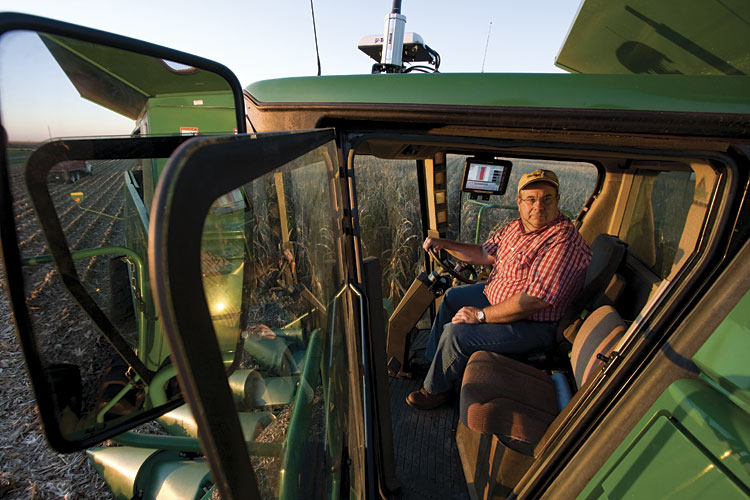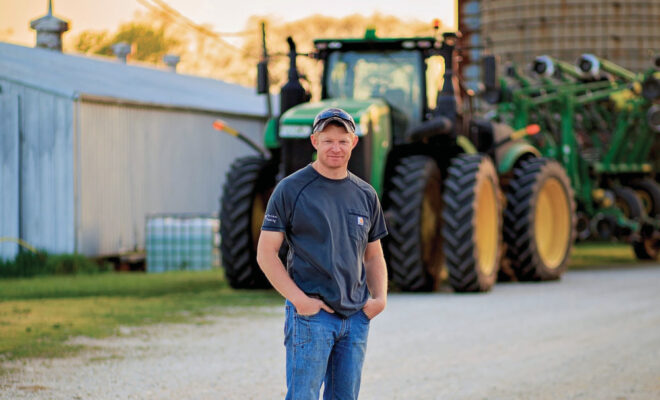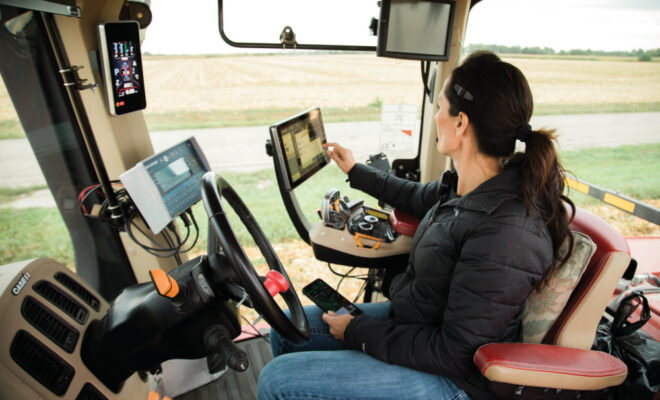From plowing fields to harvesting crop data, John Reifsteck sees technology development in American agriculture as “a pretty good success story.”
Necessity has always been the mother of agricultural invention, and the corn and soybean grower near Champaign has been an early adopter of on-farm technology.
Reifsteck uses sophisticated monitors to map crop yields and advanced genetics to fight destructive pests with fewer chemicals.
His farm is a virtual research lab where he experiments with fertilizer levels and shops corn hybrids in a quest for the most bushels from each bag of seed.
“Part of the business of agriculture today is being willing to look at new technologies and utilize them when they’re appropriate – having an open mind about new ways of doing things,” says Reifsteck, who has been farming full-time since 1977.
Reifsteck has been a pioneer in “precision farming” – use of satellite global positioning systems, high-tech field sensors, crop yield monitors and computer mapping to pinpoint where fertilizers are needed and, as importantly, where they are not needed.
That reduces potential for excess chemicals winding up in lakes and rivers, while coaxing more profit from each acre.
New technologies are helping farmers strike a balance between environmental sustainability and the need to feed a hungry world. University of Illinois agricultural policy analyst Robert Thompson estimates that by 2050, the world’s population will rise 38 percent and global food demand will grow 50 percent.
Thompson adds that a disproportionate share of that growth will occur among lower-income populations. Explosive middle-class growth in China and India will further fuel the world’s food demand.
“I can’t think of any scenario where Asia can be self-sufficient in food,” says Thompson, a former World Bank rural development director. He hails “the power of agricultural research” to boost worldwide harvests.
Biotechnology companies are pouring millions into what Thompson calls the effort to produce “more crop per drop” through genetic drought tolerance. High-yielding drought-tolerant corn may reach the market by 2012, and Reifsteck sees the technology extending the Corn Belt into places where it couldn’t exist before.
Reifsteck admits new ag technologies are not cheap, but he also believes they are essential to feeding a crowded world.
“We need to gear up to produce more,” Reifsteck says. “Farmers are buying new equipment that lets them plant and harvest crops in a more timely way. They’re buying new biotech hybrids and varieties that yield more. They’re paying more attention to things like fertilizer.”
He adds, “The economic system works in agriculture just like it does everywhere else. You can’t have cheap food and expect the world to start increasing production.”





